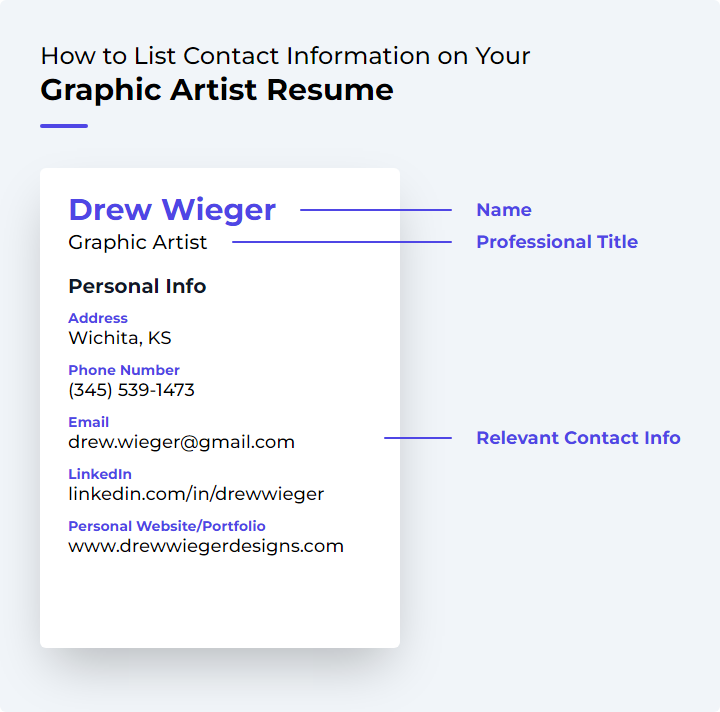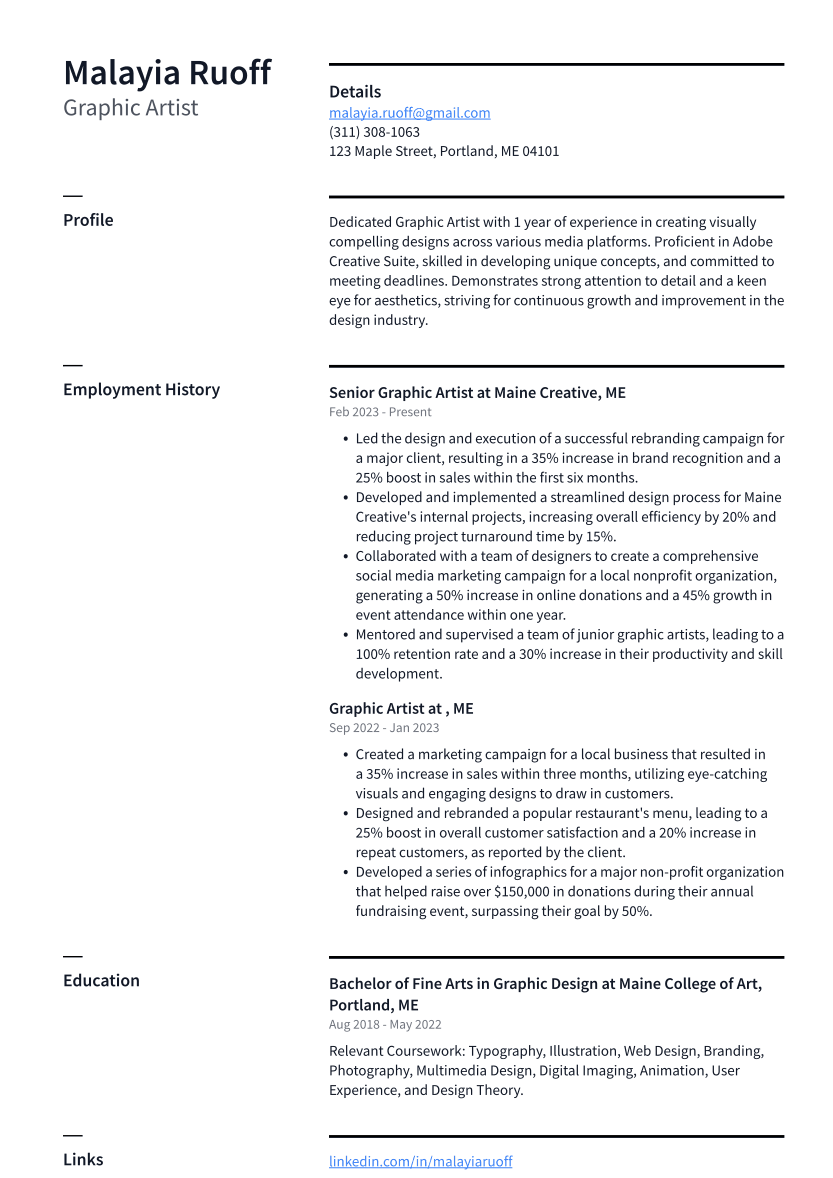Graphic Artist Resume Examples
Writing a great graphic artist resume is important because it is one of the first things a potential employer will see when they are considering you for a position. It is your opportunity to make a good first impression and sell yourself as the best candidate for the job.
Create your resume
Select from 7 professional resume templates
If you're looking for inspiration when it comes to drafting your own graphic artist resume, look no further than the samples below. These resumes will help you highlight your experience and qualifications in the most effective way possible, giving you the best chance of landing the graphic artist job you're after.
Essential Components of a Graphic Artist's Resume
A Graphic Artist's resume is a critical instrument for showcasing their expertise, experience, and creative flair to prospective employers. This document should be a captivating blend of professional achievements and artistic expression, reflecting the individual's unique talents. The core elements of a Graphic Artist's resume include personal information, employment history, skills, and a portfolio, among others. Each section plays a significant role in presenting a comprehensive picture of the candidate's capabilities. In the following sections, we delve into the specifics of what each resume segment should contain, their importance, and strategies to make them stand out to capture an employer's interest.
1. Contact Information
The Contact Information section is the gateway for potential employers to reach out to you. It should be precise and easily legible, containing:

- Full Name
- Phone Number
- Professional Email Address
- LinkedIn Profile (if available)
- Online Portfolio (if available)
- Home Address (optional)
Include links to your LinkedIn profile and online portfolio to provide instant access to your work. Ensure these platforms are up-to-date and represent your work professionally.
2. Professional Summary or Objective Statement
The Professional Summary or Objective Statement serves as your professional pitch, summarizing your career highlights, skills, and goals. Tailor this section to each job application, incorporating relevant keywords from the job posting to resonate with potential employers.
Related: Top Graphic Artist Resume Objective Examples
3. Skills and Proficiencies
The Skills and Proficiencies section is where you list your technical, creative, and interpersonal skills. Customize this list for each job application to match the job description's requirements.
Technical Skills
Include proficiency in graphic design software like Adobe Creative Suite, CorelDraw, or Sketch, as well as any relevant web design tools.
Creative Skills
Highlight your conceptual thinking, visual storytelling, and understanding of design principles.
People Skills
Emphasize your ability to collaborate, communicate effectively, and manage time efficiently.
Related: Graphic Artist Skills: Definition and Examples
4. Work Experience
The Work Experience section chronicles your professional journey. Start with your most recent position and work backward, detailing your roles, responsibilities, and achievements. Use quantifiable results to demonstrate your impact and align your experiences with the job description.
- Include freelance or contract work, internships, and relevant volunteer experiences.
5. Education and Certifications
List your highest educational achievements, relevant certifications, and any additional courses or workshops that enhance your qualifications as a Graphic Artist.
Related: Graphic Artist Certifications
6. Portfolio of Artwork or Projects
Your Portfolio is the visual testament to your skills and creativity. Select your best work, provide context for each piece, and maintain an up-to-date collection of your projects. Include a link to your online portfolio and be prepared with a physical portfolio for in-person engagements.
7. References or Testimonials
Include references or testimonials to validate your professional reputation and work ethic. Ensure you have permission from your references and that their contact information is current. Testimonials should be genuine and verifiable.
While not all employers require references on a resume, having them prepared demonstrates your readiness and confidence in your work as a Graphic Artist.
